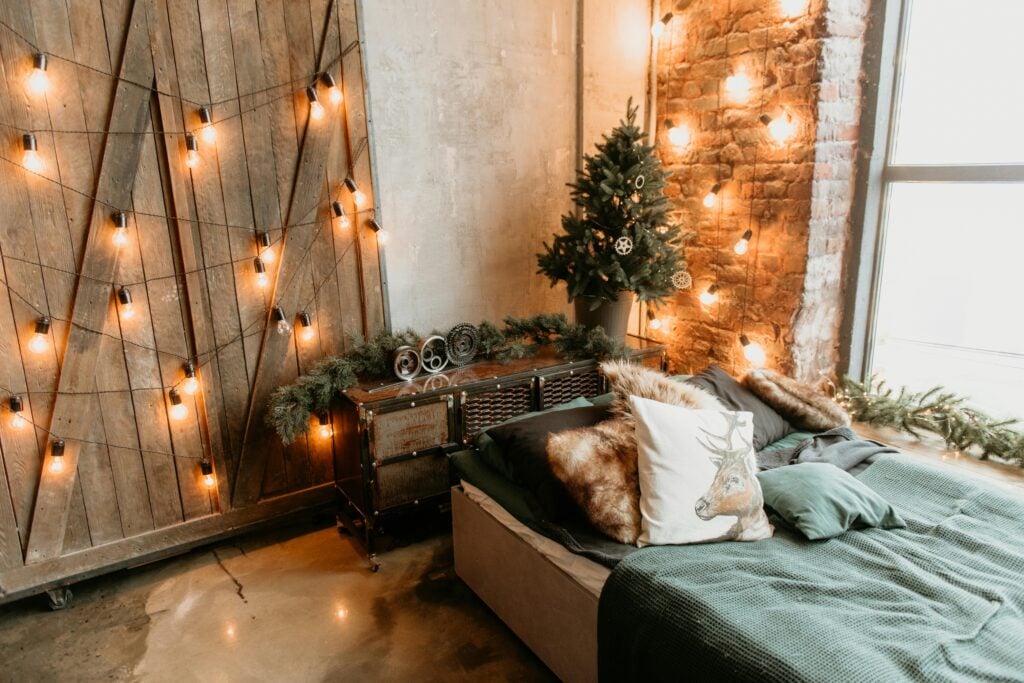Creating Connection for the Festive Season

Written by: Ivana Nady, Zen Interiors
The season of gathering
December arrives, and suddenly the house begins to change. Coats of visitors gather by the door, the scent of cinnamon drifts from the kitchen, and the calendar fills with events, parties, and long-awaited visits. It’s the month when everyday routines give way to celebration, and the home becomes the heart of it all.
For international families, this season often carries even deeper meaning. Visitors arrive from different corners of the world, and suddenly the house becomes a meeting point for stories and accents. Sometimes the celebration blends several cultures at once: familiar recipes mixed with new traditions, familiar festive songs in a different language. These gatherings become a chance to reconnect, to pass on what feels like home, and to create continuity for children growing up between worlds.
In the rush to make everything perfect, the food, the gifts, the decorations, it’s easy to overlook how much the home itself shapes our festive experience. The way we arrange our spaces quietly influences how people gather, talk, and unwind. A thoughtfully prepared home feels calm, welcoming, and inclusive, making it easier for everyone to connect and feel part of the celebration.

Prepare your home before guests arrive
Before guests arrive or school breaks begin, take a moment to prepare your home. This will create room for the season to unfold with ease.
Start by opening the pathways between main rooms. Remove small obstacles: side tables, baskets, or laundry piles, that block circulation or create visual clutter. A clear path instantly makes a home feel calmer and more welcoming.
Then simplify the surfaces. During the festivity’s coffee tables, countertops, and entryways quickly become a landing point for glasses, plates, gifts, and wrapping paper. Clearing them in advance you consciously create space and help protect those delicate ornaments you have displayed in your home.

Finally, set the sensory tone. Layer the light: candles, lamps, and strings of soft illumination instead of one bright overhead source. Bring in natural elements, a bowl of oranges, a branch of pine, a simple garland, to ground the senses in festive season. Scents like wood, citrus, or spice create an instant feeling of warmth and belonging.
These small preparations do more than make the home look ready, they change how it feels. They signal to everyone who walks in, including you, that it’s time to slow down, to connect, and to enjoy the moment.
The dining table, centrepiece of celebration
In most cultures, the dining table is a social centrepiece of celebrations, and a few thoughtful adjustments can turn it into the true centre of the season’s gatherings.
Keep sightlines open. Choose a low, simple centrepiece so everyone can see one another. Connection happens through eye contact, high and prominent decoration can block the eye contact.

Layer textures instead of aiming for perfection. Mix linen with wood, glass with greenery, so the table feels rich but unpretentious, elegant enough for guests, yet relaxed enough to enjoy the moments.
Make seating flexible. Benches, poufs, or stools let you expand easily when extra chairs are needed. For young children, a small booster or sturdy stool helps them feel part of the table rather than orbiting it.
Encourage shared participation. Invite children to fold napkins, or choose the music. Small responsibilities give them pride and show that celebrations are created together, not simply arranged for them. If you have guests staying with you, include them in your preparations too.
Zones of activity for every generation
During the holidays, the home fills with different rhythms. Children want to play, teens want to retreat, adults want to talk, and someone always needs to cook. Instead of fighting this mix, prepare your home to support it.
Think in zones, gentle boundaries that help everyone find their place without constant negotiation.

The kitchen is often the busiest room during December. Keep counters clear and pathways open so several people can move around comfortably. Assign small roles: one person in charge of hot drinks, another for desserts, children for decorations or tasting duties. When the space is organised, collaboration feels joyful rather than chaotic.
In the living area, define a specific corner for children’s activities. A rug, low table, or colourful mat o send a signal that this is designated fun zone. Stock it with art supplies, puzzles, or simple games that encourage creativity. When kids play within sight of adults, they feel included, and adults can relax knowing the chaos has boundaries.
Arrange seating in smaller clusters rather than one large circle. A mix of chairs and sofas at different angles creates natural micro-conversations and avoids everyone shouting across the room. Side tables or trays make it easy to set down a drink or plate, keeping the atmosphere relaxed.

Every celebration needs an escape corner, for an overstimulated child, an elderly relative, or a parent who just needs a moment. A single armchair with a blanket and lamp, a window seat with a book, or even a cushion corner can become a haven of calm.
By defining zones visually, with lighting, rugs, or even scent, the home gains rhythm. People can flow between activity and rest without tension, which keeps the emotional atmosphere light.
Hospitality without stress
For international families, guests often travel long distances to visit. A few thoughtful details can make them feel instantly at home and make hosting easier for you.
Start at the entrance. A clear hallway, a place for shoes, and soft lighting set the tone. Clear away some of your own items, to give space to additional pairs of shoes and coats, without overcrowding the entrance. A diffuser with a gentle scent creates an inviting first impression.

Even if you don’t have a spare room, prepare a dedicated guest area. Clear a drawer or a shelf, and prepare basket with towels and essentials. These gestures communicate care and reduce the need for constant questions.
For sleeping arrangements, think flexibility. Folding screens or lightweight curtains can turn an open-plan area into a temporary guest nook while maintaining privacy.
If sharing bathrooms, allocate some space for your guests toiletries. A small organisational step that prevents morning congestion.
Hosting well is about predictability, when guests know where to find things, everyone relaxes.
Encouraging slow moments

In the race to tick off to-do lists in time for the festive dinner, we forget that children (and adults) need pauses to absorb joy. Create deliberate moments of slowness by a daily ritual:
- Morning tea or hot chocolate
- Evening hours with board games or quiet music
- A gratitude ritual where each family member names one thing they loved that day
These pauses help the nervous system shift from performance to presence. And presence, not perfection, is what defines meaningful celebration.
Connection is the real decoration

A festive home is felt in the ease of movement, the laughter around the table, the quiet contentment after guests have gone.
When a space allows people to connect without effort, when there’s room for play, conversation, and rest, the home itself becomes the celebration.
For international families, those moments of togetherness are the truest gifts. They build a sense of continuity across borders and years. Children may forget which gifts they unwrapped, but they will remember how it felt to belong, in a room filled with warmth, light, and love.
